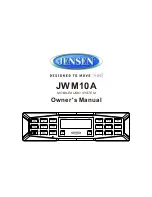
- 21 -
PATON
ProMIG
DC MMA/TIG/MIG/MAG
4. TUNGSTEN INERT GAS (GTAW) WELDING
ATTENTION:
The most common protective gas used is pure argon "Ar", sometimes helium
"He", as well as a mixture of these in various proportions. Example: argon + helium "40% Ar
+ 60% He". DO NOT allow the use of flammable gases! Use of other gases is allowed only in
agreement with the equipment manufacturer.
PROCEDURE FOR PREPARING THE DEVICE FOR OPERATION:
-
this mode does not require a wire feeder, we can disconnect these devices;
-
insert the torch cable into the socket of the source B “
-
”;
-
insert the ground cable into the socket of the source A “+”;
-
attach the ground clamp to the workpiece;
-
install the reducing valve on the gas cylinder;
-
connect the burner gas hose to the gas cylinder pressure relief valve;
-
open the gas cylinder valve, check for air-tightness;
-
connect the power cable to the mains;
-
set the device's main power switch 12 on the rear panel to the "ON" position;
-
use button 4 to set the TIG welding mode, the modes are switched in a circle;
-
use button 2 to set the main current parameter, i.e. the welding current;
If necessary, additional welding process functions can be set, see Section 6.1 for the switching sequence.
ATTENTION!
TIG torch must be of the valve type, with bayonet connector
Ø
9mm for
ProMIG-160 and
Ø13
mm for ProMIG-200/250 & 270-400V/350-400V/500-400V/630-400V.
The maximum torch current must be selected according to the operating requirements.
WARNING!
One common mistake is to sharpen the electrode on the 'needle', while the arc
may 'wander' from side to side. Correct sharpening is a slightly blunted tip, and the less
sharpened it can withstand the set current, the better. Note that at high welding currents, a
very sharpened electrode melts easily due to its low thermal conductivity. In addition, the
'stripes' created by sharpening should be along the axis of the electrode.
Summary of Contents for PROMIG-160
Page 1: ...j...
















































